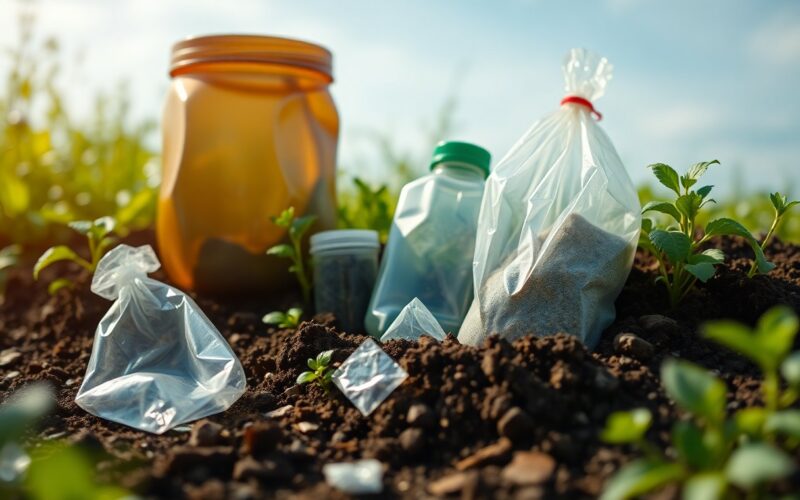Just when you thought the battle against plastic pollution was endless, biodegradable plastics emerge as a promising solution to mitigate this global crisis. By incorporating materials that can naturally decompose, these alternatives aim to lessen the environmental impact of traditional plastics that take centuries to break down, harming wildlife and ecosystems. Educating yourself about how these innovative options can positively influence your consumption habits is necessary for building a sustainable future. In this post, you’ll explore the benefits of biodegradable plastics and how they play a vital role in protecting our planet.
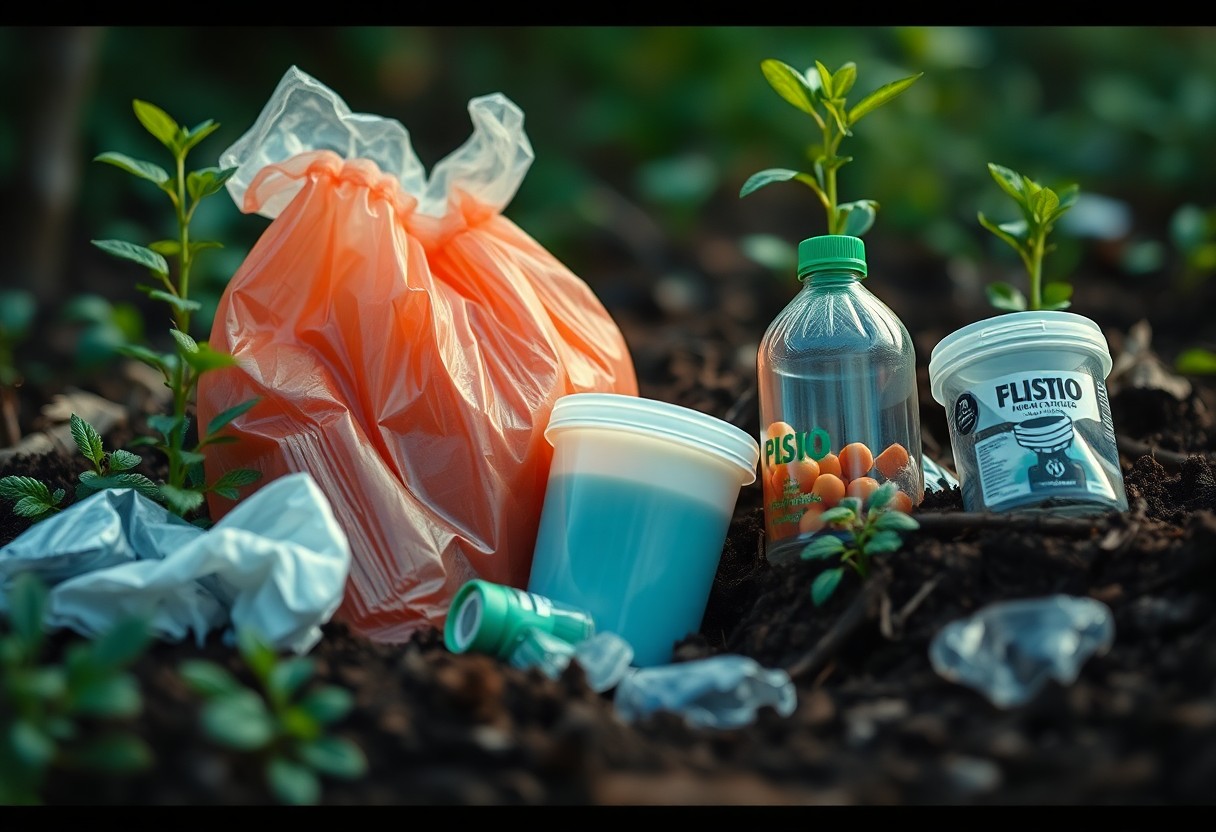
Table of Contents
Key Takeaways:
- Biodegradable plastics are designed to decompose naturally through the action of living organisms, which can help reduce the volume of plastic waste in landfills and oceans.
- These materials can be made from renewable resources, such as corn starch or sugarcane, making them an environmentally friendly alternative to traditional petroleum-based plastics.
- Proper disposal and composting are imperative for biodegradable plastics to break down effectively, emphasizing the need for appropriate waste management systems.
- Biodegradable plastics can still release microplastics if not processed correctly, highlighting the importance of ongoing research to improve their environmental impact.
- Public awareness and education on the benefits and limitations of biodegradable plastics are key to fostering widespread adoption and addressing plastic pollution comprehensively.
Understanding Plastic Pollution
While the convenience of plastic has made it a staple in modern life, its pervasive presence in our environment has led to alarming consequences. Your awareness of Biodegradable Plastic is The Perfect Solution for Tackling … plastic pollution is important to understanding how you can contribute toward a more sustainable future. Recognizing the types and sources of plastic waste is the first step in addressing this issue.
Definition of Plastic Pollution
Between various consumer products, packaging materials, and industrial applications, plastic pollution refers to the accumulation of plastic substances in the environment, which adversely affects urban and natural ecosystems alike. This pollution can take different forms, from microplastics that are barely visible to larger debris that can harm wildlife and disrupt habitats.
It’s not just an environmental issue; plastic pollution represents a significant global health concern as well. The sheer volume of plastic waste created annually, combined with its long degradation period, leads to harmful effects on your health and the health of future generations.
Sources of Plastic Waste
Beside consumer habits, various industrial processes contribute to plastic waste generation. Everyday items like shopping bags, water bottles, and food containers are among the most common forms of plastic waste you encounter. Additionally, sectors like construction and manufacturing also play a role, as they produce plastic materials that often end up discarded.
Plastic waste originates from diverse sources, including household waste, industrial operations, and improper disposal techniques. This accumulation poses a significant risk, as it can easily find its way into oceans, rivers, and soil, disrupting natural ecosystems.
Impact on the Environment
One immediate consequence of plastic pollution is the degradation of your natural habitat. This type of pollution not only clogs waterways but also leaches harmful chemicals into the soil and water systems, endangering both human and wildlife health. Your surroundings can become increasingly hazardous as accumulated waste turns into breeding grounds for disease-causing organisms.
Furthermore, plastic materials release toxins into the environment as they break down, affecting air quality and contributing to climate change. Recognizing how plastic pollution impacts your environment is important for fostering a more responsible approach to consumption.
Effects on Wildlife and Marine Life
To illustrate the far-reaching consequences of plastic pollution, consider its effects on wildlife and marine life. Animals often mistake plastic for food, leading to fatal consequences. Ingestion of plastic can cause internal injuries, malnutrition, and even death, impacting entire ecosystems that rely on these species for their balance and diversity.
Environmentally, the presence of plastic waste alters habitats, making them unsuitable for native species while allowing invasive ones to thrive. You must recognize that every piece of plastic waste represents a potential threat to the delicate fabric of life functioning within your ecosystem.
The Need for Biodegradable Plastics
You may have noticed the increasing conversation surrounding biodegradable plastics and their potential to alleviate the severe issues associated with traditional plastic waste. With the urgency to address plastic pollution growing, switching to materials that can break down more easily in the environment seems to be a necessary step. Sustainability of biodegradable plastics: New problem or… explores the nuances of this transition and its significance in your everyday life.
Conventional Plastics vs. Biodegradable Plastics
Below the surface of society’s dependency on conventional plastics lies a troubling reality. Traditional plastics, made from petroleum-based resources, can take hundreds of years to degrade, contributing significantly to environmental pollution. In contrast, biodegradable plastics are designed to break down more quickly and efficiently under specific conditions, thus offering a more sustainable option for your consumption needs. However, the question remains whether these biodegradable alternatives are genuinely more beneficial or if they introduce new challenges into the ecosystem.
Below this discussion, you should recognize that while both types of plastics serve critical functions, the long-term implications of using conventional plastics are detrimental. Biodegradable options, primarily made from renewable biomass sources, hold promise in reducing the overall plastic burden on our planet. However, this only works if the disposal methods align with their designed breakdown capabilities.
Urgency of Addressing Plastic Pollution
Against the backdrop of soaring plastic production and waste, the urgency to shift our habits is clearer than ever. Estimates suggest that over 300 million tons of plastic are produced annually, creating a crisis for our oceans, wildlife, and even human health. As plastics continue to accumulate, the impact on ecosystems becomes increasingly visible, showcasing the need for immediate change. By adopting biodegradable plastics, you contribute to a solution that mitigates the pollution problem.
Conventional plastics have increasingly become an ally to pollution and a foe to nature. As plastic waste continues to accumulate in landfills and oceans, its implications grow more severe. This urgency to solve the plastic pollution crisis encourages innovation, urging industries and consumers alike to adopt sustainable solutions, such as biodegradable plastics. It is a shift that you can be a part of, helping create a healthier planet.
Societal Awareness and Consumer Demand
Above this critical conversation is a growing awareness among consumers about the environmental footprint of their choices. Many are now actively seeking products with fewer negative effects on the environment, leading to a rise in demand for biodegradable plastics. As your purchasing habits shift toward sustainability, businesses are being compelled to adapt their offerings. The power of your voice and choices can indeed influence market trends.
Above all, the transformation of consumer demand showcases a broader societal shift towards sustainability. This movement is not merely a trend; it represents a fundamental change in values that emphasizes the importance of preserving our environment. The more you advocate for biodegradable options, the more likely industries will realize the economic incentives of developing eco-friendly products.
Plastic consumption is a part of daily life, and you, as a consumer, have the power to reshape this landscape. By opting for biodegradable plastics, you not only reduce pollution but also promote an environmentally responsible ethos within your community. Your choices matter, and with each sustainable decision you make, you contribute to a collective effort to foster a healthier planet for future generations.
Types of Biodegradable Plastics
For those looking to understand the diverse world of biodegradable plastics, it’s important to recognize the various categories available today. Each type has unique characteristics that contribute to the fight against plastic pollution. Here is a breakdown of the most common forms of biodegradable plastics:
| Type | Description |
|---|---|
| Starch-Based Plastics | Made from renewable resources, these are often used in packaging and disposable items. |
| Polyhydroxyalkanoates (PHAs) | A class of biodegradable plastics produced by microbial fermentation of sugars or lipids. |
| Polylactic Acid (PLA) | Derived from corn starch or sugarcane, PLA is widely used in food packaging. |
| Other Innovative Materials | Includes products made from natural fibers and new bio-based chemicals. |
Starch-Based Plastics
On your journey to reducing plastic waste, you may come across starch-based plastics. These materials are derived from natural starch sources like corn, potatoes, and wheat. Their ability to degrade effectively in composting environments makes them a popular choice for single-use items such as cutlery, plates, and bags.
Starch-based plastics are known for their affordability and ease of processing. However, it’s important to note that while they break down under specific conditions, they may not decompose as quickly in landfill settings where oxygen may not be present. Understanding these characteristics can help you make more informed choices regarding your plastic use.
Polyhydroxyalkanoates (PHAs)
Against the backdrop of plastic pollution, polyhydroxyalkanoates (PHAs) offer a compelling solution. These biodegradable plastics are produced naturally by microorganisms as they metabolize carbon-rich substances. PHAs can decompose in various environments, including soil and marine conditions, making them a versatile option for bioplastics.
Some of the benefits of PHAs include their ability to be integrated into existing plastic recycling streams and their sustainability, given that they can be derived from waste products. By choosing products made from PHAs, you contribute to a more sustainable system that aligns with environmental goals.
With the rise of PHAs, researchers are continually exploring how these bioplastics can replace traditional materials. Their unique properties, including flexibility and biocompatibility, make them suitable for various applications, from medical devices to packaging materials.
Polylactic Acid (PLA)
Polyhydroxyalkanoates are not the only option available – polylactic acid (PLA) is another widely recognized biodegradable plastic. PLA is derived mainly from renewable resources, such as corn starch or sugarcane, and is celebrated for its low environmental impact during production.
This material is widely used in food packaging, utensils, and even textiles, garnering attention for its ability to decompose in industrial composting conditions. However, you should be cautious, as PLA may not break down effectively in typical landfill environments, highlighting the importance of proper disposal methods.
For instance, PLA’s production from renewable resources not only lowers carbon emissions but also supports agricultural economies. Understanding the lifecycle and impact of PLA can empower you to choose more sustainable options.
Other Innovative Materials
Polyhydroxyalkanoates and PLA are not the only biodegradable materials available; there are several other innovative materials emerging. These include products made from natural fibers like hemp, jute, and bamboo that can replace traditional plastics in certain applications. Additionally, researchers are experimenting with new bio-based chemicals derived from agricultural waste to create biodegradable products.
These alternatives can provide safer and more sustainable options for packaging, textiles, and many other applications. By staying informed about these innovative materials, you position yourself to make choices that align with your values of environmental sustainability.
Polylactic acid has inspired many industries to explore and develop alternative methods and compositions for biodegradable materials. To support this shift, consider incorporating these options into your daily life, ultimately contributing to reducing plastic pollution.
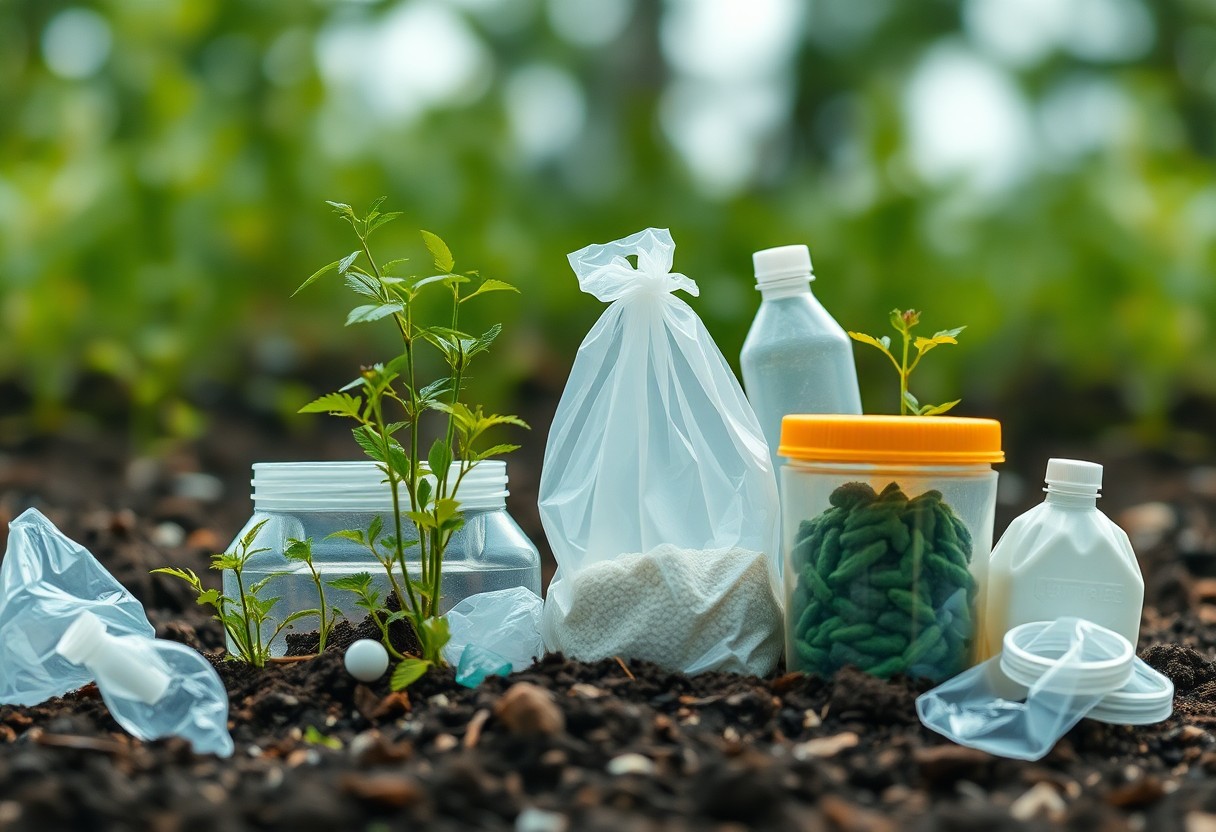
Manufacturing and Disposal of Biodegradable Plastics
Now, let’s probe into the intricacies of how biodegradable plastics are manufactured and disposed of. These materials, designed to offer an alternative to conventional plastic, require specific production processes that can vary significantly depending on the raw materials used. Understanding these processes is key to comprehending the full lifecycle of biodegradable plastics.
Production Processes
Across the globe, manufacturers leverage a variety of raw materials to create biodegradable plastics. Common materials include plant-based polymers like polylactic acid (PLA) derived from corn starch and polyhydroxyalkanoates (PHA) produced by microbial fermentation. These materials undergo specialized processing techniques such as extrusion, injection molding, or blow molding, similar to traditional plastics but tailored to maintain their biodegradable properties. This means that careful monitoring during the production should ensure that environmental benefits are not compromised by harmful additives typically found in conventional plastics.
Furthermore, the innovation within the production landscape continues to evolve. With a greater emphasis on reducing your carbon footprint, companies are investing in sustainable sourcing practices and greener production methods, aligning with global sustainability goals. Consequently, you will find biodegradable plastics increasingly prevalent in everyday products, from packaging to disposable tableware.
Composting and Biodegradation Processes
Processes that facilitate the decomposition of biodegradable plastics are as vital as their production. Composting and biodegradation take center stage in this context, as they determine how these materials interact with the environment after use. Ideally, biodegradable plastics should breakdown in a composting setting, converting into organic matter without leaving behind microplastics or harmful residues. However, this process requires specific conditions, such as optimal temperature, moisture, and microbial activity, to effectively occur.
Hence, understanding how you can influence these processes is important. By ensuring biodegradable plastics reach suitable composting facilities, you play a significant role in advancing their intended environmental benefits. If disposed of incorrectly, such as in landfills, biodegradable plastics may not decompose in the same manner, underlining the importance of educating yourself about proper disposal methods.
Challenges in Disposal
Plastics, whether traditional or biodegradable, face significant challenges in disposal. One of the primary hurdles is public misconception. Many individuals mistakenly believe that all biodegradable plastics can decompose in natural environments, leading to careless disposal practices. If faced with conditions outside of industrial composting facilities, these materials may persist for years, contributing to the same pollution issues they were designed to combat.
As such, the behavior of biodegradable plastics in uncontrolled settings is a source of ongoing concern. Many do not decompose as quickly or completely as you might expect, especially in landfill environments. This disconnect between expectations and reality makes it imperative for you to be informed about the limitations and responsibilities associated with biodegradable plastics.
To address these challenges, concerted efforts must be made. Improved public awareness campaigns and better recycling and composting infrastructure are important to ensure you understand how to properly dispose of these materials. Only through your informed choices and community support can biodegradable plastics achieve their intended impact on reducing pollution.
Industrial vs. Home Compostability
Around the globe, discussions about compostability often highlight the differences between industrial and home composting systems. Industrial composting facilities are specifically designed to create optimal conditions for rapid decomposition, often exceeding the temperatures and microbial populations found in home compost bins. This means that while some biodegradable plastics are crafted for industrial composting, they might not break down effectively in your backyard setup.
As you explore this distinction, it’s important to identify the types of biodegradable plastics marked for home composting. You will find that these products are formulated to decompose at lower temperatures and with less sophisticated microbial activity, making them suitable for your home composting efforts. Understanding these differences helps you make informed choices about the products you select and how to dispose of them.
Another aspect worth noting is that not all biodegradable plastics are equal. Many items labeled as compostable may only be suitable for industrial composting facilities. Be sure to read the labels and instructions carefully to ensure that you are contributing positively to composting efforts in your area, whether it is at home or through municipal services. By doing so, you align your actions with the broader goals of sustainability, ultimately driving forward the movement against plastic pollution.
Applications of Biodegradable Plastics
Many industries are starting to recognize the potential of biodegradable plastics and how they can significantly contribute to reducing the amount of plastic waste. From packaging to medical applications, these materials are emerging as sustainable alternatives that not only serve the same functions as conventional plastics but also break down more quickly and safely in the environment. By adopting biodegradable plastics in your practices, you can take an important step towards a more sustainable future.
Packaging Solutions
At the forefront of biodegradable plastic applications is the packaging sector. More and more companies are incorporating biodegradable materials into their packaging solutions, whether for food products, consumer goods, or e-commerce shipments. Utilizing biodegradable plastics in packaging helps to reduce the volume of waste in landfills, as these materials can degrade over time, diminishing their long-term environmental impact. By choosing biodegradable packaging, you support a shift towards an eco-friendly economy.
Furthermore, biodegradable packaging provides added benefits beyond just environmental considerations. It helps businesses align their brand with sustainability, often appealing to environmentally-conscious consumers. By integrating biodegradable materials into your packaging strategy, you can enhance your brand’s reputation and take advantage of the growing market demand for sustainable choices.
Agricultural Uses
One of the most innovative applications of biodegradable plastics is in agriculture. These materials can be used for products such as mulch films, plant pots, and seedling trays, which help improve crop yields while minimizing environmental harm. By utilizing biodegradable mulching films, agriculture can promote healthier soil and reduce the need for traditional plastic waste disposal practices after the growing season concludes. This not only benefits your crops but also reduces the burden on waste management systems.
Indeed, biodegradable plastics in agriculture can enhance the efficiency of farming practices while providing environmental benefits. When the growing season ends, these products naturally decompose, further enriching the soil and help in reducing soil contamination from conventional plastics. Adopting these sustainable practices in your agricultural endeavors could be a transformative move towards a greener future.
Medical Applications
Medical use cases for biodegradable plastics are gaining momentum as well. These materials are utilized in various applications, including sutures, implants, and drug delivery systems, where they can safely dissolve in the body over time. By using biodegradable alternatives, you can contribute to the reduction of medical waste, which is a significant concern in the healthcare sector. Importantly, these biodegradable materials often come with enhanced biocompatibility, making them ideal for usage in sensitive medical applications.
Also, the incorporation of biodegradable plastics in the medical field showcases the potential for innovation in tackling environmental issues. Many healthcare providers are starting to explore these alternatives to reduce their plastic footprint, thereby prioritizing patient care while caring for the environment. Through these advancements, you can be part of a positive change that not only benefits your patients but also the planet.
Consumer Products
Below are some common consumer products that can be made from biodegradable plastics, ranging from cutlery and plates to personal care items. By choosing biodegradable alternatives for everyday items, you take actionable steps towards reducing plastic pollution. This transition can be as simple as opting for biodegradable bags or utensils during your shopping trips, which collectively can lead to significant environmental improvements.
Products like biodegradable toothbrushes and straws are excellent examples of how you can incorporate sustainability into your daily routine. Each time you make a mindful choice in using these products, you contribute to a growing movement inspiring others to follow suit. Embracing biodegradable consumer products not only aids in reducing plastic waste but can also influence manufacturers to produce more eco-friendly options in the long run.
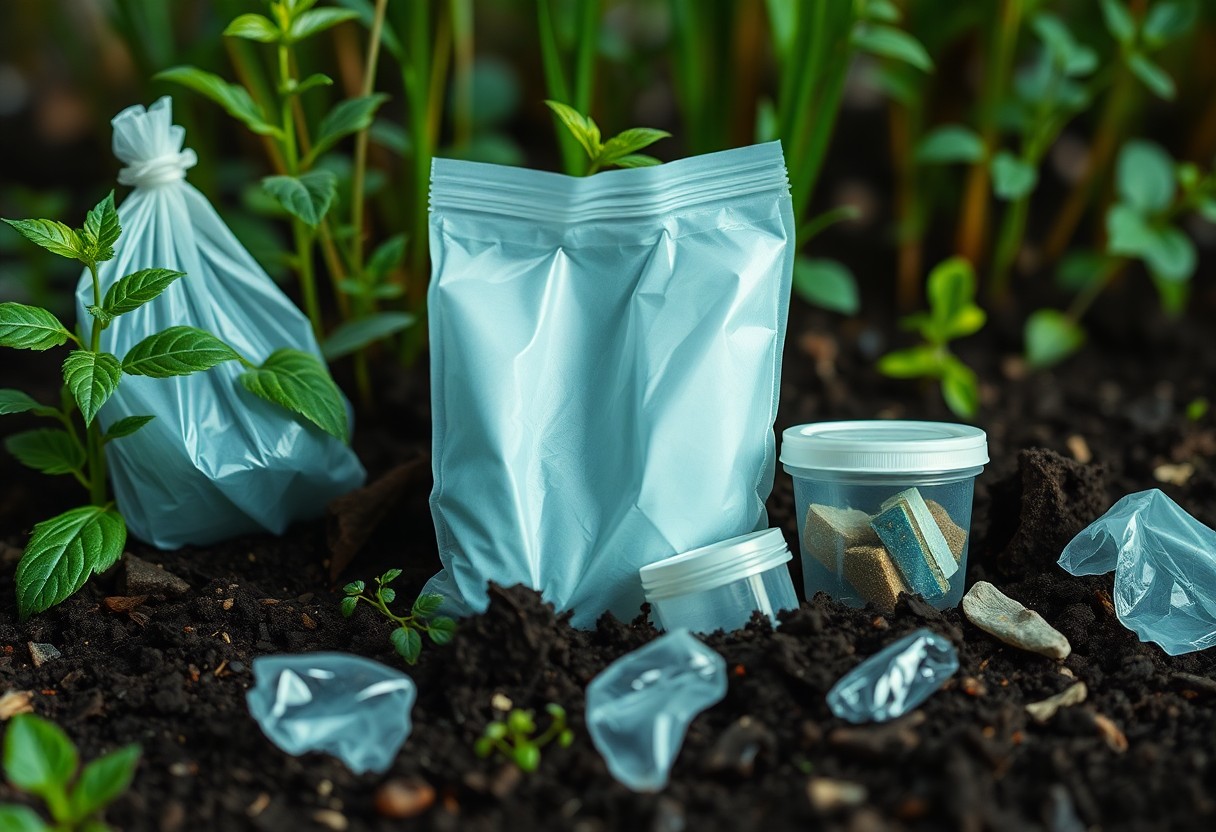
Future Trends and Innovations
Not only is the conversation around biodegradable plastics gaining traction, but it is also paving the way for several innovative developments that could transform the industry. One critical area of focus is research and development in biodegradable plastics. Researchers are exploring novel materials that can decompose through natural processes, offering you more sustainable alternatives to traditional plastics. The introduction of bio-based polymers, produced from renewable resources, is at the forefront of this research. Before long, these advances could lead to biodegradable products that not only break down effectively but also maintain the required performance standards in various applications, from packaging to medical devices.
Research and Development in Biodegradable Plastics
Before you can grasp the full potential of biodegradable materials, it’s important to note that innovation does not stop at just production methods. Ongoing studies are focusing on enhancing the mechanical properties of these materials, making them suitable for wider applications while minimizing their environmental impact. Collaborative efforts between academic institutions and industry leaders are vital in propelling this research, leading to breakthroughs that could reshape our reliance on conventional plastics.
Government Policies and Regulations
Biodegradable plastics are increasingly coming under the spotlight in terms of government policies and regulations. Lawmakers around the globe are recognizing the urgent need to tackle plastic pollution, prompting new policies that encourage the adoption of these eco-friendly alternatives. Stringent regulations can motivate industries to invest in biodegradable solutions, leading to a faster transition from traditional plastics.
Hence, as more governments implement incentives and support policies, you will likely observe a shift in market dynamics, especially as consumers become more environmentally conscious. These policies can significantly accelerate the development and commercialization of biodegradable plastics, facilitating a healthier ecosystem and a cleaner environment for future generations.
Role of Education and Community Involvement
Among the most powerful tools for promoting biodegradable plastics is education. By informing communities about the dangers of plastic pollution and the benefits of biodegradable alternatives, you can encourage responsible consumption habits. Local initiatives and educational programs can engage citizens to understand the significance of recycling and composting, forming a more sustainable community environment.
Additionally, schools and community organizations play a vital role in raising awareness about biodegradable plastics. Innovations in curriculum that include hands-on projects, such as creating biodegradable products, can motivate young minds to pursue careers in sustainability, which is imperative for the future of our planet.
Potential for Market Growth
The landscape of biodegradable plastics presents a promising potential for market growth that you should keep an eye on. As consumer demand for sustainable products continues to rise, companies are increasingly seeking biodegradable alternatives to fulfill their corporate social responsibility. This growing awareness can lead to significant investments in the industry, pushing for advancements in technology and production processes to meet your needs without harming the environment.
In fact, the market potential is not limited to just packaging; it can span multiple sectors, including agriculture, textiles, and automotive, driving innovation across various industries. Your choices as a consumer can influence market trends, compelling businesses to prioritize sustainability and offer eco-friendly options to cater to your growing preferences.
Conclusion
Now that you have explored the significance of biodegradable plastics, it’s crucial for you to understand their role in combating plastic pollution. By choosing products made from biodegradable materials, you are actively participating in a solution that could mitigate some of the environmental damage caused by traditional plastics. These innovative alternatives break down more naturally, significantly reducing the long-lasting impacts on ecosystems and wildlife. Your informed choices can contribute to a shift in consumer demand, encouraging industries to adopt sustainable practices and invest in biodegradable options.
Furthermore, as you consider your daily habits, integrating biodegradable products into your life can create a ripple effect within your community. Sharing knowledge about the benefits of these materials can inspire others to make environmentally conscious decisions, ultimately leading to a collective effort to reduce plastic waste. By embracing biodegradable plastics, you are not only making a positive change for your environment but also advocating for a healthier planet for future generations. Your choices today lay the foundation for a more sustainable tomorrow.
FAQ
Q: What are biodegradable plastics?
A: Biodegradable plastics are materials designed to break down naturally in the environment through the action of microorganisms. They are made from natural materials such as starch, cellulose, or polylactic acid (PLA), allowing them to decompose over time, reducing their environmental impact compared to traditional plastics.
Q: How do biodegradable plastics differ from traditional plastics?
A: Traditional plastics can take hundreds of years to decompose, contributing significantly to global plastic pollution. In contrast, biodegradable plastics break down more quickly when exposed to the right environmental conditions. This distinguishes them as a more sustainable option, although the actual decomposition time can vary based on specific conditions and the type of biodegradable material used.
Q: Are all biodegradable plastics compostable?
A: Not all biodegradable plastics are compostable. Compostable plastics have specific criteria they must meet, including breaking down into organic matter within a certain timeframe under industrial composting conditions. Some biodegradable plastics require specific conditions to degrade effectively, making it important to understand the labeling and certifications associated with these materials.
Q: What are the environmental benefits of biodegradable plastics?
A: The primary environmental benefit of biodegradable plastics is their potential to reduce the amount of plastic waste in landfills and oceans. Since they decompose more quickly than traditional plastics, their use can lead to a decrease in plastic pollution, lower greenhouse gas emissions during production, and a smaller carbon footprint over time.
Q: Can biodegradable plastics be recycled?
A: Biodegradable plastics generally should not be mixed with regular plastics in recycling systems. Many recycling facilities do not have the capability to process biodegradable materials effectively. It is important to follow local guidelines on proper disposal to ensure they break down in appropriate conditions and do not contaminate recycling streams.
Q: Are biodegradable plastics a complete solution to plastic pollution?
A: While biodegradable plastics offer a promising alternative to conventional plastics, they are not a silver bullet for plastic pollution. Comprehensive solutions require a multifaceted approach, including reducing overall plastic consumption, improving waste management systems, and increasing public awareness about sustainable practices.
Q: How can consumers support the use of biodegradable plastics?
A: Consumers can support biodegradable plastics by seeking out products made from these materials, promoting awareness about their benefits, and making environmentally conscious purchasing decisions. Supporting companies that prioritize sustainability and advocating for policies that encourage the development and use of biodegradable materials can also help drive positive change.
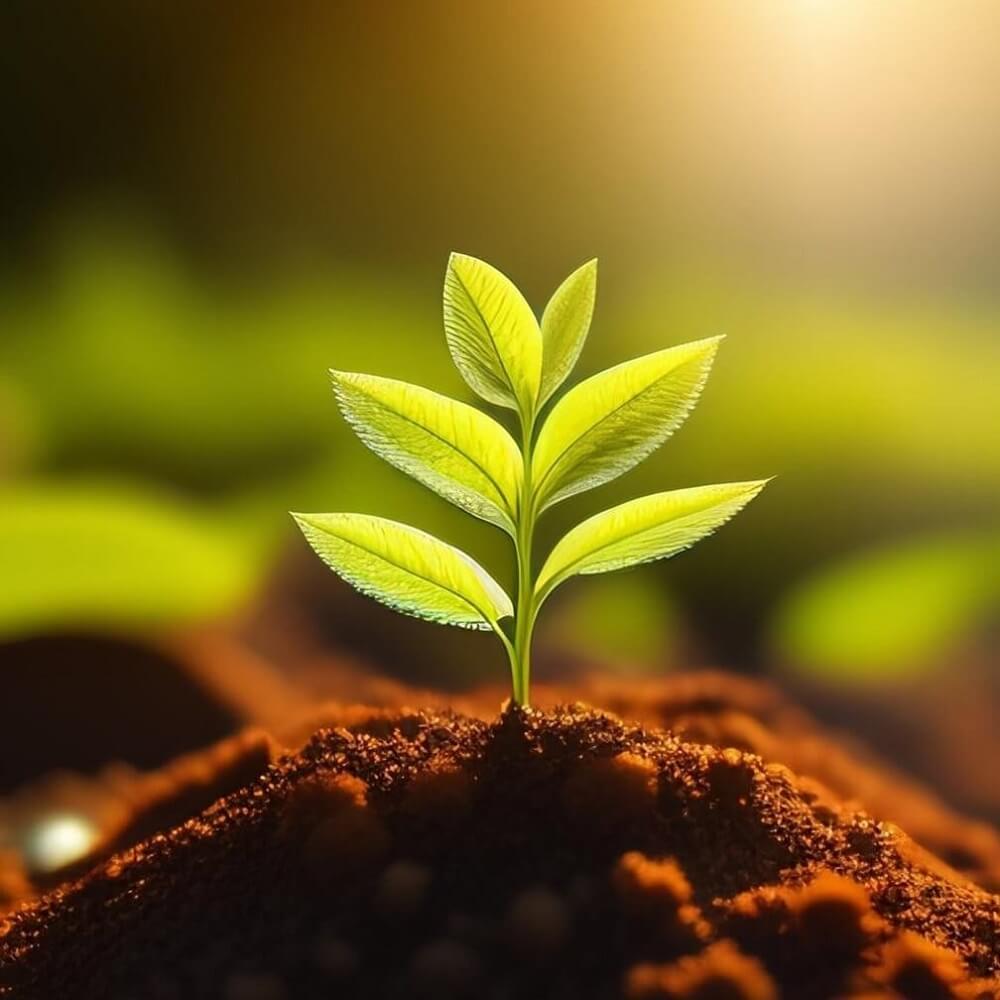
Our contributing author is a passionate advocate for eco-friendly living and sustainability. With a background in eco-life, they are dedicated to inspiring and empowering individuals to adopt environmentally conscious lifestyles. Through insightful articles, they share practical tips, innovative solutions, and thought-provoking perspectives to promote a greener, more sustainable world. Join them on the journey towards eco-smart living and discover how small choices can make a big impact. 🌱

